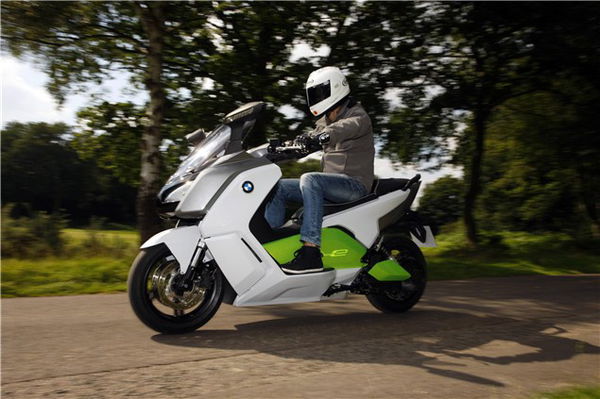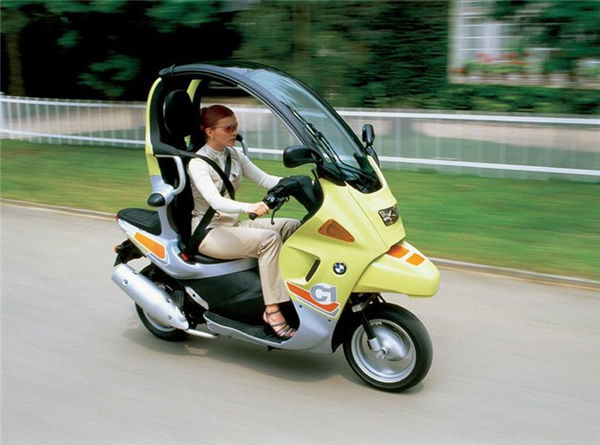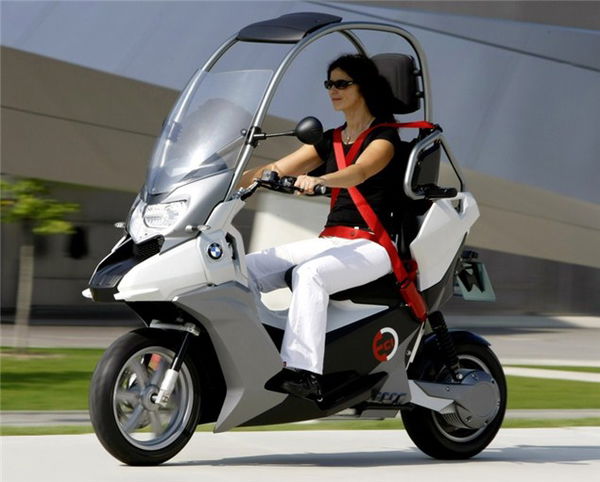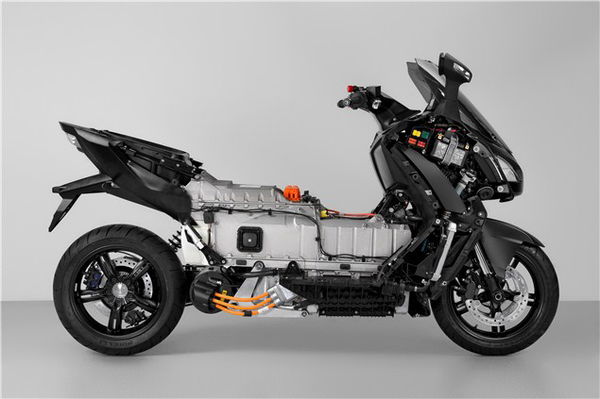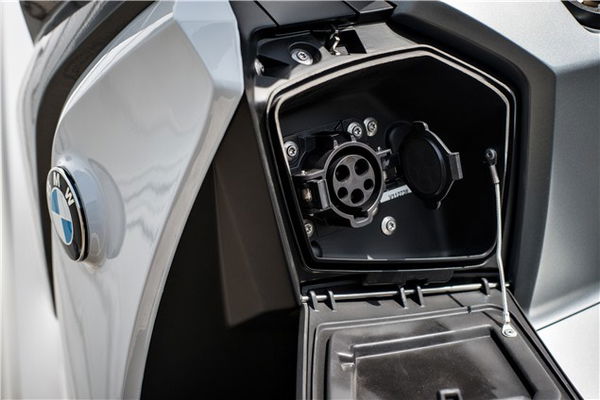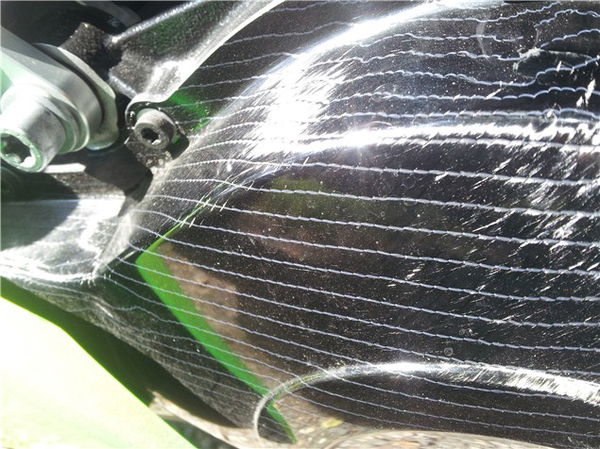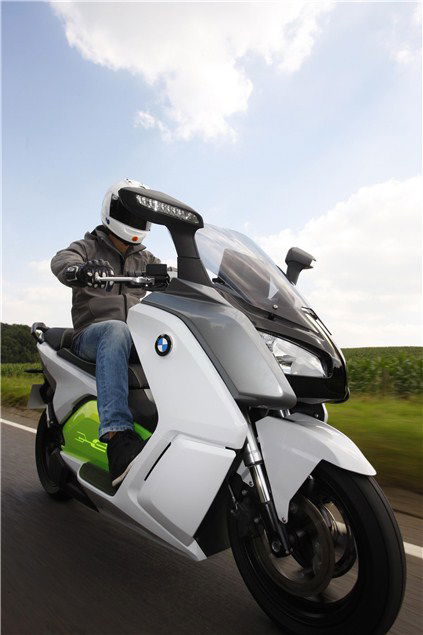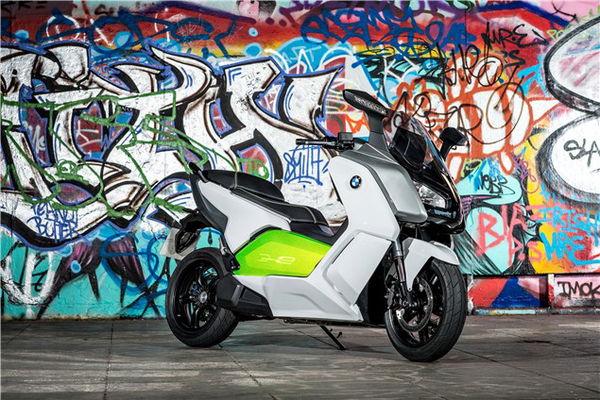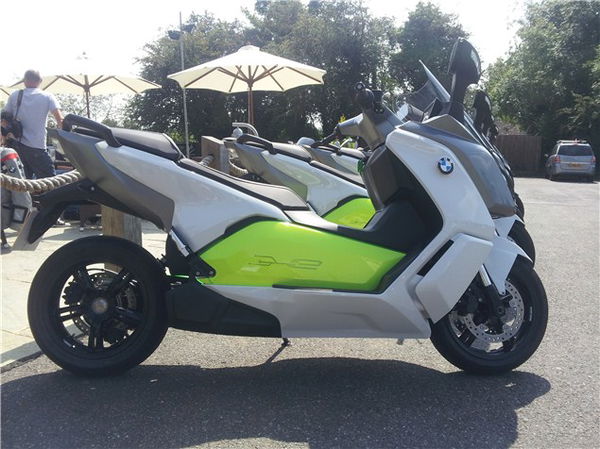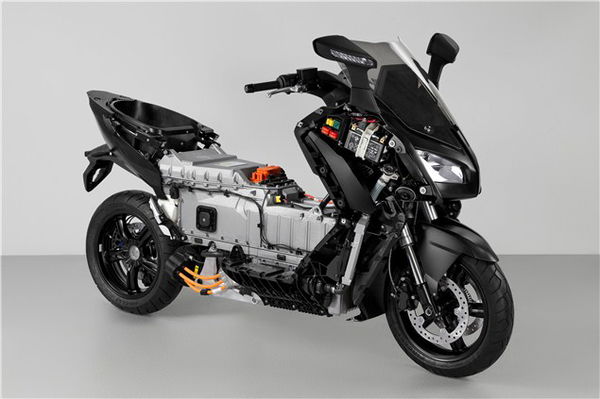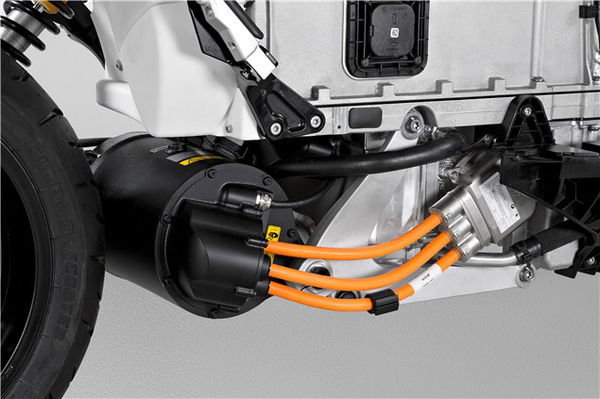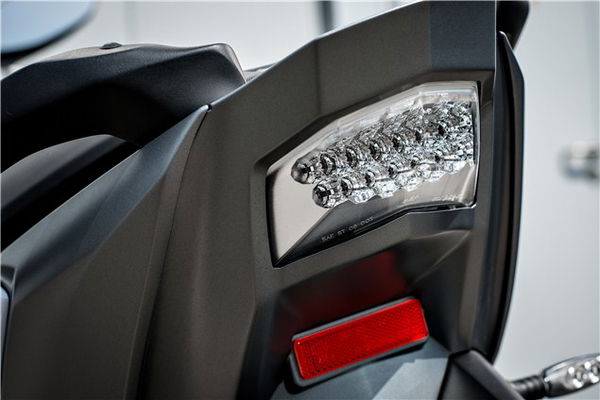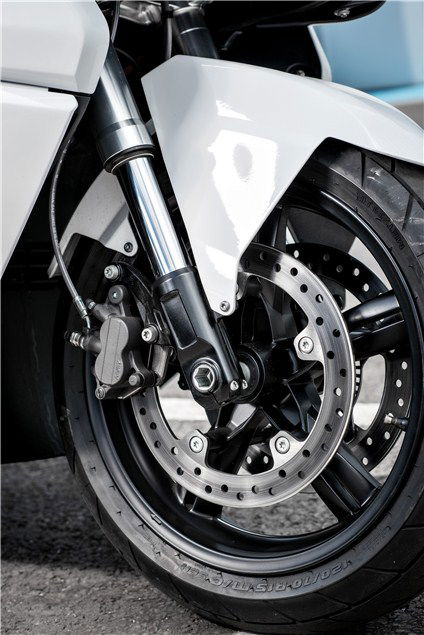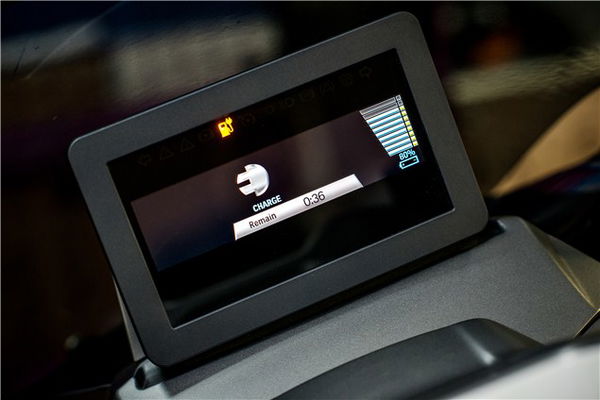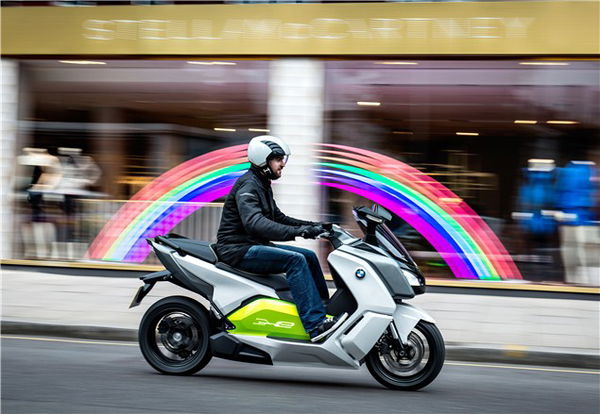BMW C evolution electric scooter review
It'll cover 60 miles, will do 75mph and takes 3 hours to charge. So what's the catch?
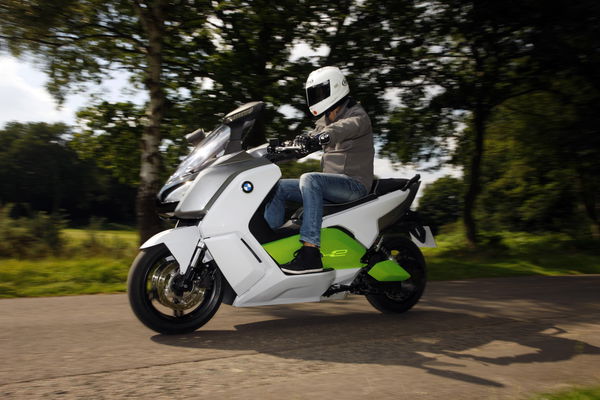
WHEN I think about BMW and scooters, I think of the C1.
I loved the C1's concept: an urban commuter that, with its roof and seatbelt, offered more safety features than a conventional motorcycle and familiarity to car drivers.
It was never going to convert motorcycle riders, I never saw it as a scooter with a roof, it was a whole new class of vehicle and a chance to convert people who just wanted to commute faster but without adding risk. I don't think most C1 riders would have seen themselves as bikers or ever become 'bikers' but that's ok with me.
In Europe, you could wear one without a helmet, in the UK, you couldn't. As soon as you put a helmet on - to the general public - you're a risk-taking lunatic. I imagine that dented the C1's clean-cut 'as safe as a car' image.
A man called Peter Parker rode his without a helmet and took on the law through the courts but eventually lost. That, was pretty much that. The C1 never really sold and remains, to this day, an object of curiosity.
10 years later, BMW are back, beating the scooter drum again. They've launched the C600 Sport and C650 GT, both 10-grand 650cc scooters. The price-tag will deter all but the seriously committed and BMW have estimated they'll sell 200 in the UK in the first year. I think that's optimistic.
Will these new scooters be remembered in 10 years' time? I'm not so sure. For those who've decided these new scooters answer the question of how best to get around, you'll struggle to persuade them there's a better way of parting with ten-grand.
BMW hinted at an electric scooter in 2010 with the C1-E, a tarted-up C1, that used the electric running gear of a Vetrix scooter, probably more an excercise in monitoring public reaction and demand rather than something they were ever going to produce.
The C evolution is loosely based on the chassis from the new C600 Sport but it isn't just a battery and electric motor bolted into the C600 rolling chassis; it's packed with loads of interesting technical features and slightly unconventional ways of doing things. Is unconventional BMW at their best? I think so.
BMW claim performance is on-par with their petrol-powered scooters. Petrol? To power a scooter? How crude. The C evolution is packing 3 battery modules, with 12 cells per module. I've got 36 cells, baby with 8 kWH of storage and and 35kW of peak power. Confused? Well, you might be, but get used to how many lightbulbs your two-wheeler can illuminate rather than how many carts of apples it can pull, because in a world of 'intelligent recuperation', horsepower is so very 19th century.
Sat on the C evolution, there's nothing to say you're not on a 'normal' scooter, no weird roof, no seatbelt. The TFT display is as sharp as an iPhone and - like your iPhone - shows you how much battery you've got left. BMW claim 1% battery for every 1km you travel, although if you're flat-out, at an electronically-limited 73mph, your 60-mile range will reduce to around 40-miles.
The limited performance of electric vehicles has always been their Achilles' heel and 'range anxiety' nightmares give battery-powered commuters sleepless nights, but BMW claim that's all in the past.
60-miles between charges doesn't seem like much. When I think of the number of times I leave the house with my phone on the verge of being flat, I write myself off ever owning a battery-powered vehicle. Unless we find a way to automatically charge battery powered vehicles, they'll never work for the average forgetful lazy bloke like me . Or will they? The C evolution takes 3 hours to fully charge but just 45 minutes to charge to 70%. So that's just 10 minutes on the plug, in order to buzz 5-miles to work in the morning. I could probably get away with it.
BMW claim the battery will last 10 years with the same charing and output characteristics and their record distance has been 160 miles on a full charge, alas covered at 25mph.
The battery modules are housed in a hefty die-cast aluminium battery compartment, as you can see in the stripped-down shot to the right. The C evolution isn't quite a monocoque chassis, but it's close. A small front subframe bolts onto the aluminium housing to hold the forks, the swingarm bolts on and the rear seat unit bolts on too. While it isn't monocoque, that aluminium housing is strong and stiff.
That battery is quite heavy too, 80kg, but it sits extremely low in the chassis and with no petrol sloshing about on top, the low centre-of-gravity is one of the C evolution's trump cards.
The electric motor is integrated into the swingarm and final drive is via a belt. One familiar feature is the radiator at the front, which is used to cool the motor, but the battery casing has a hollow shaft running through it and is air-cooled on the go.
With the sidestand up, the C evolution is ready to roll. Except with no noise, you'd be forgiven for thinking otherwise. I put my hand on the throttle with trepidation, like the first time I stuck my tongue on a 9-volt battery. Tap it and the C evolution scoots forward. I knew it was going to do that, honest.
BMW's project leader, Dr Christian Ebner leans in and says: "Be cafeful. Open ze throttle fully while leant over, you will do zis only once."
Oh great. I'm all at sea on a £300,000 concept scooter. Give me back my horsepower! I have no idea how much trouble 35kW can get me into but I'm about to find out. Rolling out of the car park, the C evolution feels stiff. I tentatively open it up: it moves forward, my face doesn't get ripped off. I'm disappointed.
Actually, it's deceptively fast. It responds instantly to throttle input, with little of the lag or build-up I'm used to with a petrol engine. In the pre-ride press conference BMW said it made 590Nm of torquem which I was rather hoping would dig a great big gouge out of the tarmac, but it wasn't to be.
BMW's engineers say they've had a real challenge to make the throttle feel more like one connected to a petrol engine than switching on a stadium floodlight.
It doesn't take long for the C evolution to hit 75mph but 20-40mph is where it's at. It piles on that 20 mph like a sportsbike in 2nd gear but the noise it makes, or rather doesn't make, is eery. You might be familiar with the noise you get when you press the button on your vacuum cleaner to draw the power cable back in. Well that's what you get on the C evolution. It feels like you're winding in 100 metres of cable and if you don't watch out, you might get hit by the plug on the end.
When it comes to the electric world, everything you thought was real, is probably simulated. BMW have simulated engine braking, so that when you back off the throttle, you don't - as is the case with a two-stroke - feel like you're still racking up speed. This 'engine braking' serves another purpose, it charges the battery - this happens during braking too. BMW claim between 10 and 20% more range through this clever little feature.
The C evolution feels light, even though at 265kg it's 4kg heavier than the C650 GT. The light feeling is all down to how effortless it is getting into corners. The chassis, while very stiff thanks to the aluminium battery housing, flicks from side to side without sag. It isn't subtle though and clatters over bumps.
Its stiffness makes it handle well but means the tyres work overtime. Get a handful of the front brake and the ABS chips in immediately as there's little give in the suspension and the tyres struggle to soak up the force. If BMW can introduce a bit more give in the setup, it'll sacrifice some of the ultrasharp steering that you really don't need but make the C evolution better on typical UK roads.
After a few miles, you forget you're on a weirdly-powered scooter, it just doesn't matter. Compared to its petrol-powered cousins, the C evolution doesn't feel at all limited. Out on country roads you can buzz past traffic without leaving a trace and without feeling like you're trying.
In town, the C evolution's only drawback would be the lack of noise. Ok, so cyclists don't make much noise and they manage ok, but unlike a pushbike, the C evolution can rack up 60mph in a few seconds, meaning you can put yourself into a spot of bother without anyone knowing you're coming.
What's slightly odd about the C evolution's power output is that although maximum output is 35kW, during homologation the output is based on what the vehicle is capable of producing over a 30-minute period and in the C evolution's case, that's 11kW, which means the C evolution is learner-legal.
With BMW claiming the electricity works out at 1-pence per mile, it's hard to imagine cities won't be silent with the sound of electric scooters like the C evolution in 10 years time. The sticking point is going to be the cost. The concepts were rumoured to cost well into six figures, the conventional petrol-powered C scooters are £10,000 and while BMW wouldn't even hint at a price, they did say they'd be looking at leasing the C evolution, rather than selling.
For me, with a scooter as capable as this, the only real downer is the lack of noise. If you can simulate engine braking and a throttle cable, surely you can simulate the sound of an engine.
I'll have a C evolution for my daily commute, please. Just make it sound like a Honda RC166.
Sponsored Content
Latest Reviews
More Reviews


